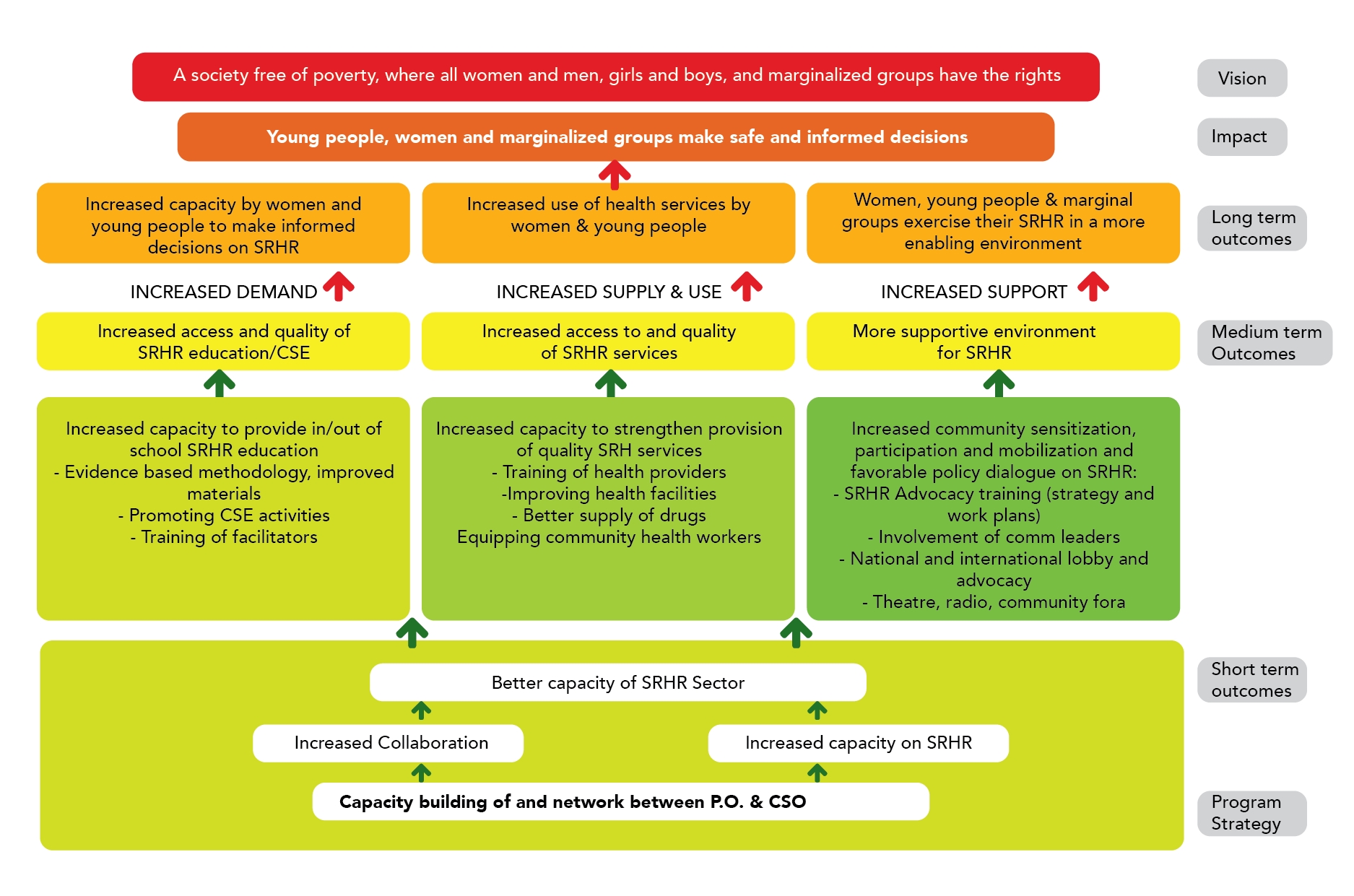According to the information available, the SRHR Alliance has developed a ToC or ‘multi-component approach’ that reflects how it envisages change to happen through the UFBR programme. The multi-component approach comprises three elements: demand, supply and support, which each have their own strategy but also influence each other:
The aim of the Unite for body rights (UFBR) 2010-2015 Program was to work towards a society free of poverty in which all women and men, girls and boys, and marginalized groups were able to make safe and informed decision on sexual and reproductive health and rights irrespective of their ethnic, cultural and religious background, age, gender and sexual orientation.
The specific project objectives included:
- Increase the use of contraceptives, also among young people;
- Increase use and quality of mother-and childcare services;
- Improvement of quality and range of sexuality education, in and out of school;
- Combat (sexual) violence against women;
- Increase acceptance of different sexual orientations.
This program was implemented by 7 member Organizations within the SRHR Alliance namely: Africa Alive!; African Medical and Research foundation (AMREF)-Kenya known as now AMREF health Africa, Centre for the Study of Adolescence (CSA), The Great Lakes University of Kisumu (GLUK), Nairobits Trust, Network of Adolescents and Youth of Africa (NAYA) Kenya and Support Activities in Poverty Eradication and Health (SAIPEH).
The specific project objectives included:
- To increase demand for and access to quality Sexual and Reproductive Health (SRH) services
- To increase the quality and delivery of Comprehensive Sexuality Education (CSE)
- To reduce incidences of Sexual and Gender Based Violence (SGBV)
- To increase acceptance of sexual diversity and gender identity
The programme targeted young people (aged 10–24 years) and women. To improve the SRHR situation of these groups, the UFBR programme combined three strategies:
- Improving access to and the quality of SRHR education (increasing SRHR demand);
- Improving access to and the quality of SRH services (increasing SRH supply); and
- Improving the enabling environment (increasing SRHR support).
The SRHR Alliance’s Theory of Change (ToC) is based on the conviction of this multi-component approach: all components (supply, demand and an enabling environment) need to be addressed to be most effective in realizing results.
Through the ASK and UFBR program the voice of partners on SRHR agenda were and have been enhanced tremendously both at National and County levels. Organizational capacity of Partners in different areas of SRHR programming were built and strengthened. Additionally, both programs increased synergy and collaboration among partner CSOs leading to greater community reach. Both the GUSO and the AmplifyChange programmes are based on the lessons learnt and findings of the outcome measurements of the ASK 2013-2015 and UFBR 2010-2015 programs. As an Alliance, it is our hope that the current and future programs will ride on the structures created by both ASK and UFBR programs towards the realization of SRHR of young people especially girls and young women in Kenya and beyond.



